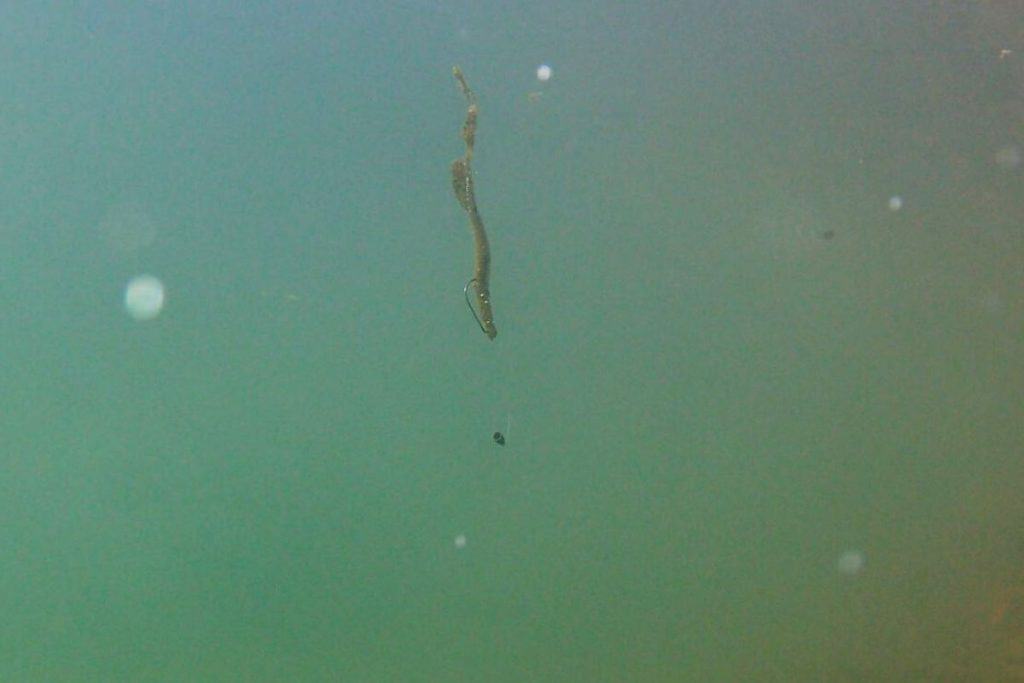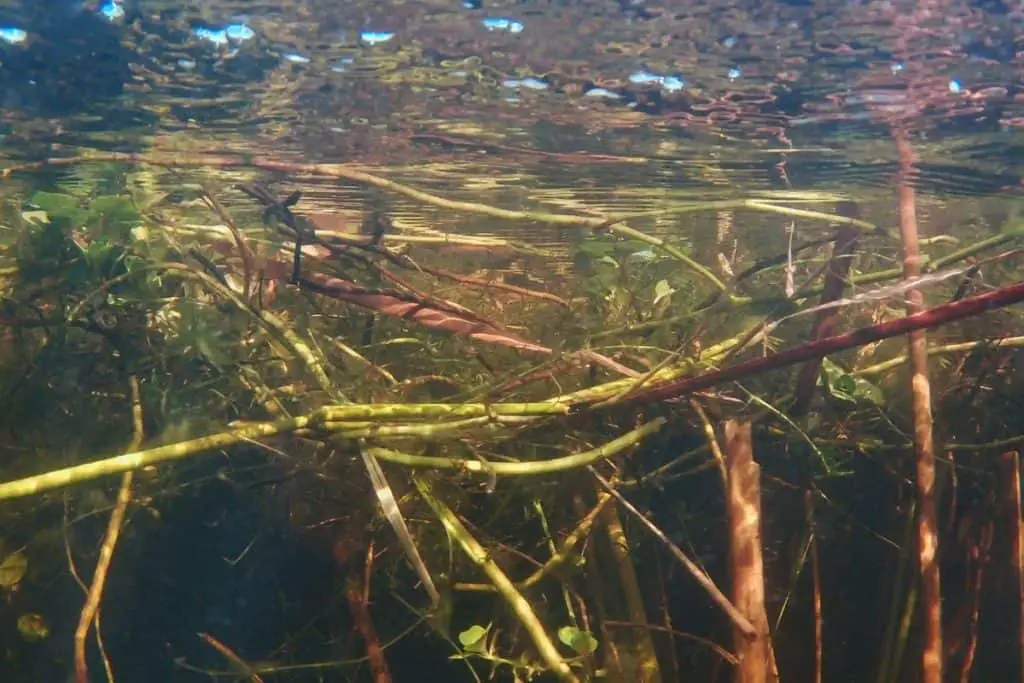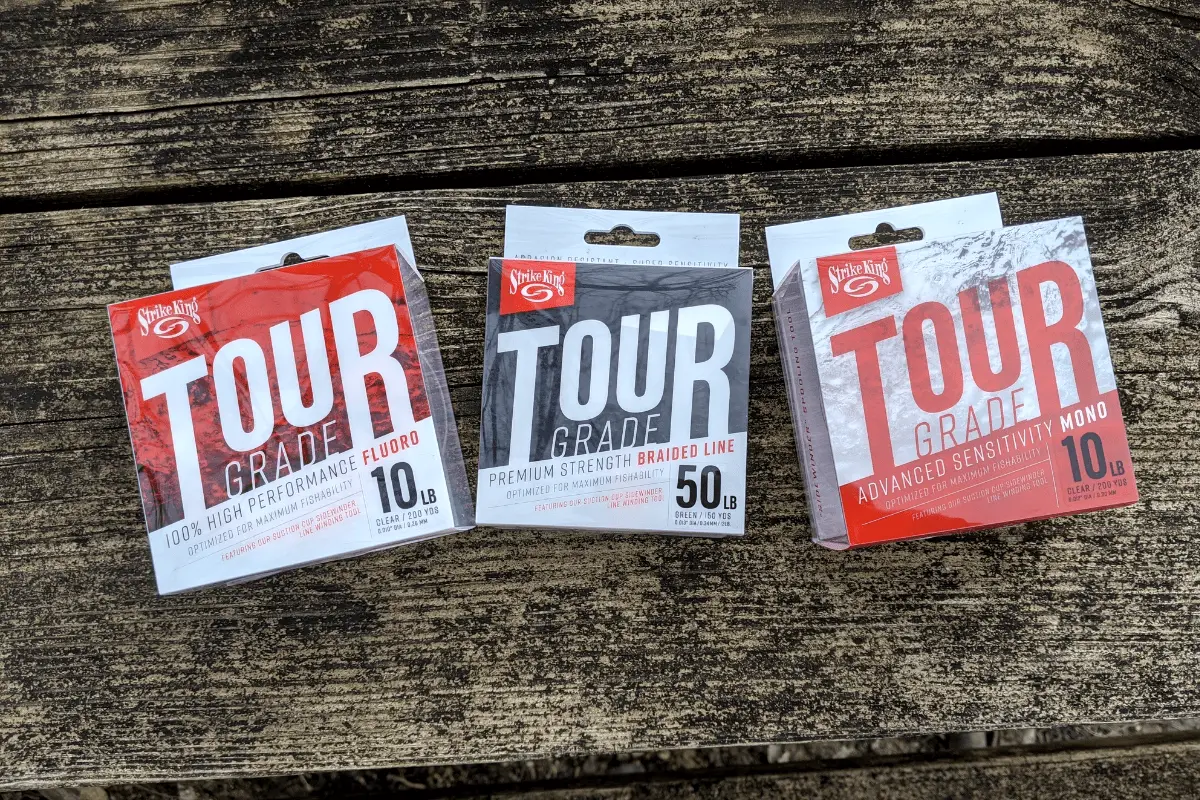Texas rigging soft plastics catch bass – lots of them. One of the more often asked questions about this presentation regards line choice.
In stained or dirty water with heavy cover, 50-pound test (or heavier) braided line is the best choice. When the water is clear and the cover isn’t as thick, using 15-25 pound test fluorocarbon is most often used.
Dialing in the correct line choice for Texas rigs has a direct impact on how many fish are caught and landed.
The Pros and Cons of Each Type of Fishing Line
| Line Type | Pros | Cons |
| Monofilament | Inexpensive, Easy to handle | Lots of stretch |
| Fluorocarbon | Low-visibility, Abrasion Resistant | Expensive, Wrong knot will snap easily |
| Braid | Very sensitive, Lasts a long time, No-stretch | Expensive, Very Visible |
Braided Line
This type of line is most often used in the thickest cover and the dirtiest water. As seen above, one of the downsides of braid is its visibility.
Some anglers believe that bass are not line shy. Spending the majority of my time fishing ultra-clear lakes has taught me otherwise, but the bass on your waters may respond differently.
Despite its visibility, when I can get away with braid, it is always my first choice for Texas rigs.
The sensitivity is better than anything else. Period.
The lack of stretch is also critical when fishing the nastiest cover. As an angler, we do not want the bass to turn their heads and bury up deeper into the wood or weeds. When this happens, the odds of pulling the fish free and landing the bass go way down.
With no stretch, the energy from the hookset is transferred right to the hook and lure. The fish comes toward the angler immediately and often clears the cover they are buried in.
On a side note, when fishing Texas rigs, it is important to have the drag turned all the way down, or tight. Once again, this is to keep the bass from peeling line and getting deeper into the cover.
I prefer to use 50-pound test braid, but many anglers will use 65-pound test or even 80-pound test. The limp and supple super braids on the market today are easy handling and cast exceptionally well.
(Here is an article that goes into more depth on braided line.)
Fluorocarbon Line
When the water has a visibility of several feet or is ultra-clear, I will tie on a fluorocarbon leader to my mainline braid.
The other option is to go with straight fluoro. The connecting knot from the mainline to the leader often makes anglers nervous when fishing thick cover, but I find the extreme sensitivity braid provides outweighs the few times my connecting knot has failed.

And if you are a budget conscious angler, straight fluorocarbon gets to be extremely expensive.
Fluorocarbon has little stretch, which is great for Texas rigs and is very abrasion-resistant.
It is also the most invisible line. Its properties refract light differently than monofilament. It is amazing how little it can be seen on sunny days in clear water.
When using fluorocarbon line either as a leader or as a mainline, I like to start with 20-pound or 25-pound test.
For connecting my braided mainline to the fluorocarbon leader, I like to use the Red Phillips knot. The below video shows how to tie this fast and easy knot.
Monofilament Line
This is my least favorite option for Texas rigs.
Mono has a lot of stretch. I mean a whole bunch. Tie some mono off to something and start to walk backward in your yard. The amount of stretch in the line will shock you.
Because of this, I find that I lose many more fish when using Texas rigs in the thick stuff.
Yes, it works. Yes, you will land fish. I find the biggest heartache comes when hooking a big bass in heavy cover. Two-pounders don’t stretch that line as a 5-pound bass will. That is where the downsides of mono come to play.
The major upside of monofilament line is the price. Anglers with tight budgets can afford to spool up with mono and have a fun day on the water.
20 to 25-pound test is a good starting point when spooling with mono.
(Here is an article that goes into detail on the Texas Rig)
Heavier Line is Always the Safer Choice When Texas Rigging Thick Cover
When bass anglers opt for Texas rigs, the places fished are full of objects that can weaken or break line.
Line breakage and bass pulling off are always possibilities when putting our lures in the places big bass like to hide. I start off by using a line that is on the heavy side. If needed, I can then back down. But as I mentioned earlier, the bass do not get a great look at the lure until it is right on them. Line visibility is not near the issue compared to something like a drop shot rig.

Excellent Knot for Hard Hooksets and Texas Rigs
For most of our Texas rig fishing, hard hooksets are normal.
When ripping a bass from brush or pulling them from weeds, the initial surge of energy from the hands, through the rod, and to the hook is harsh.
That powerful hookset is needed to pull bass out of that cover quickly and to make sure the hook penetrates – especially on big bass.
I have tried many knots on all types of line, and I feel that the double-line uni knot is the best one out there for this. Especially if you are using fluorocarbon in any way. It is extremely strong and does knot force the line to pinch down on itself the way a Palomar knot does.
The below video will cover this knot in detail.
Good luck out there and make sure to encourage someone today. You never know how you may change their life forever.
Isaiah 6:8

